A conversation with the Clerk of Markets

Schulder Griffith has no illusions about the importance of his job as Clerk of Markets. Five municipal markets and half a dozen vendors’ arcades and malls fall under his jurisdiction. All told, these facilities provide more than 5,000 stalls and somewhere in the region of 3,000 separate businesses. For a period of a month or so prior to Christmas, those statistics swell significantly.
Around 1,000 additional itinerant vendors join the fray, hawking their goods inside and outside markets, on pavements and anywhere else close to where shoppers are likely to be. Those too are the responsibility of the Clerk. “Sometimes this job can be gruelling,” Griffith says.
In his twentieth year as Clerk of Markets, Griffith says that there couldn’t be too many more challenging administrative pursuits in Guyana. Managing municipal markets falls under Cap 28:01 of the Municipal and District Councils Act and the office of the Clerk of Markets must administer more than 70 city by-laws, covering a bewildering array of issues ranging from rental of stalls to the seizure and destruction of unwholesome foods. “The problems are similar in all of the markets. Managing large numbers of people from all walks of life under a single roof is, in itself, a huge challenge,” Griffith explains.
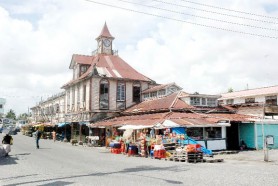
The powers of the Clerk of Markets are considerable. The renting of stalls falls under the jurisdiction of his office and so too do issues pertaining to what is sold, food safety and the cleanliness of stalls. Under the law too, the Clerk of Markets can deem a vendor to have terminated tenancy of a stall in circumstances where the vendor “fails to keep open or occupy or use his stall for more than six successive days without the consent of the Clerk of Markets.” At the other, perhaps less dignified extreme, the office of the Clerk of Markets has responsibility for preventing or repelling invasion of any municipal market by stray dogs. Between the two extremes, there are a range of other responsibilities that fall under the purview of the Clerk of Markets. There are accounting responsibilities associated with the collection of rents; meat and food inspection; the administration of stall tenancies^ and the management of commercial activities on “all stellings and landing places on the river frontage of any market.” Then there are those duties associated with ensuring fair trading. Here, the responsibilities can range from seeking to placate a disgruntled consumer protesting ‘short weight,’ or a stallholder unhappy over the presence of an itinerant haggler providing what might considered to be unfair competition.
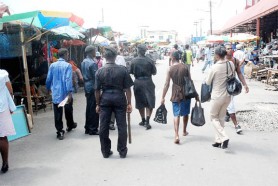
Under the by-laws that empower him, there are several sanctions which the Clerk of Markets can impose for stallholder transgressions. Griffith, however, seems disinclined to take his job to those draconian extremes. His preferred management style embraces a balancing act between “keeping a tight rein of observance of the by-laws” and fashioning an amiable co-existence between the municipality and the several hundred businessmen and women whose primary preoccupation is with doing business. “People,” he says, “respect you more if they understand what you can do without your actually having to do it.”
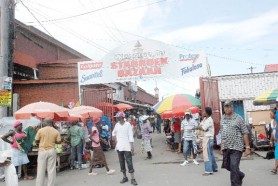
From his office aback of Stabroek Market, Griffith administers a huge slice of Georgetown’s commercial domain with unfussiness that belies the complexity of his job. His most demanding task, it seems, is “keeping sweet” with long-suffering vendors who complain ceaselessly, and, invariably, justifiably. At the same time, the Clerk of Markets must ensure that the shortcoming in the services delivered to stallholders by the municipality do not come to be seen by the ‘victims’ as a licence for taking liberties of their own.
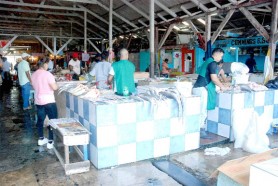
There are problems at all of the municipal markets. The buildings are old and something is always in need of repair or maintenance. The problem, invariably, is money. “We consistently collect more than 90% of our fixed rents from the markets. The problem is that we have no control over spending.” By that Griffith means that while the five municipal markets yield more than $200M annually in rents, that revenue must be spread across the entire municipality, essentially subsidizing those areas of the Council where revenue collection is weak. The stallholders are brooding but tolerant.
The ‘satellite’ markets—Bourda, Albouystown, Kitty and East Ruimveldt—are administered separately by senior members of the office of the Clerk of Markets. Griffith himself visits them regularly and when he does he must steel himself for stallholders’ complaints about the quality of the service they receive.
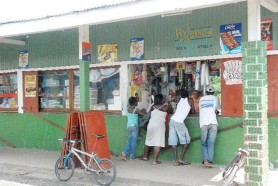
Sometimes the challenges go further. “Sometimes people do not take account of the fact that stallholders are people from all walks of life. They are extremely competitive people and sometimes competition spill over into confrontation. My staff have had to intervene to settle personal differences from time to time,” he points out.
A management policy that embraces collaboration with the stallholders has seen the creation of Stallholders Associations and various other linkages between the municipal administration and its tenants. At Stabroek Market, Griffith has learnt that art of strategically embracing selected stallholders as members of his management team. His line of reasoning is that if you keep the stallholders on your side, your job is made much easier.
He also does not underestimate the commercial significance of the municipal markets under his control. All told, their volume of retail business more than matches that of the rest of the urban trading centre. Griffith makes the point too that several of the more successful urban high street businessmen and women learnt their trade in one or another of the city’s municipal markets. “Some of these businessmen, in the clothing and grocery business, have been highly successful outside the markets but have retained their modest operations inside the markets,” he says.
Those businessmen who have had more than a passing association with Stabroek Market include several who are among the best-known urban entrepreneurs in Guyana today. Griffith names a few including newspaper proprietor Glen Khan, Rizwan Khan of Discount, Nigel Johnson of Nigel’s Supermarket and Nizwan Mohammed.
There are also the peripheral entrepreneurs, the breed described by Griffith as the “flat foot hustlers.” The term describes a mixture of itinerant vendors and people who simply describe themselves as “businessmen,” offering a range of services but not entirely averse to outwitting unsuspecting consumers. “It takes a while to understand the complexities of the market culture,” Griffith says. “Some things are not as they seem.” He tells a story of a female itinerant vendor who solemnly promised “in tears” that once her confiscated goods were returned she would not return to the location inside the market where she was operating illegally. “Less than ten minutes after her goods were returned she was back at the exact place where her goods had been confiscated.”
Sometimes, he says, “the markets are a hustle,” places that attract people who are often desperate to make a living. “It’s a balancing act. You can never relax in the application of the by-laws. You do so and there are people who will roll over you. In places like markets, basic laws of orderliness must be maintained. On the other hand, you sometimes have to mindful of the fact that the decisions that you make can affect the livelihoods of good people.”
Griffith’s vision for Stabroek Market includes its transformation into one of the city’s major tourist sites. He talks about a project that seeks to make that a reality. It includes some measure of renovation of the Stabroek Market tower, upgrading the catering services inside the market and the creation of a range of Stabroek Market souvenirs.
Challenged to respond to difficulties resulting from a scarcity of funds, Griffith appears to be progressing well in pursuit of what he describes as a public/private partnership to help ensure the sustainability of the markets. In Stabroek Market, at least, major product distributors have placed huge advertising signboards on some stalls. Griffith likes the idea. It is, he says, “a way of linking municipal markets to mainstream business” and he looks to “early next year” as a likely time-frame for creating a convivial tourist environment in the Stabroek Market. To this end, plans are in train to meet with the Ministry of Tourism to discuss the initiative prior to its implementation.Griffith has learnt that art of strategically embracing selected stallholders as members of his management team. His line of reasoning is that if you keep the stallholders on your side, your job is made much easier.
He also does not underestimate the commercial significance of the municipal markets under his control. All told, their volume of retail business more than matches that of the rest of the urban trading centre. Griffith makes the point too that several of the more successful urban high street businessmen and women learnt their trade in one or another of the city’s municipal markets. “Some of these businessmen, in the clothing and grocery business, have been highly successful outside the markets but have retained their modest operations inside the markets,” he says.
Those businessmen who have had more than a passing association with Stabroek Market include several who are among the best-known urban entrepreneurs in Guyana today. Griffith names a few including newspaper proprietor Glen Khan, Rizwan Khan of Discount, Nigel Johnson of Nigel’s Supermarket and Nizwan Mohammed.
There are also the peripheral entrepreneurs, the breed described by Griffith as the “flat foot hustlers.” The term describes a mixture of itinerant vendors and people who simply describe themselves as “businessmen,” offering a range of services but not entirely averse to outwitting unsuspecting consumers. “It takes a while to understand the complexities of the market culture,” Griffith says. “Some things are not as they seem.” He tells a story of a female itinerant vendor who solemnly promised “in tears” that once her confiscated goods were returned she would not return to the location inside the market where she was operating illegally. “Less than ten minutes after her goods were returned she was back at the exact place where her goods had been confiscated.”
Sometimes, he says, “the markets are a hustle,” places that attract people who are often desperate to make a living. “It’s a balancing act. You can never relax in the application of the by-laws. You do so and there are people who will roll over you. In places like markets, basic laws of orderliness must be maintained. On the other hand, you sometimes have to be mindful of the fact that the decisions that you make can affect the livelihoods of good people.”
Griffith’s vision for Stabroek Market includes its transformation into one of the city’s major tourist sites. He talks about a project that seeks to make that a reality. It includes some measure of renovation of the Stabroek Market tower, upgrading the catering services inside the market and the creation of a range of Stabroek Market souvenirs.
Challenged to respond to difficulties resulting from a scarcity of funds, Griffith appears to be progressing well in pursuit of what he describes as a public/private partnership to help ensure the sustainability of the markets. In Stabroek Market, at least, major product distributors have placed huge advertising signboards on some stalls. Griffith likes the idea. It is, he says, “a way of linking municipal markets to mainstream business” and he looks to “early next year” as a likely time-frame for creating a convivial tourist environment in the Stabroek Market. To this end, plans are in train to meet with the Ministry of Tourism to discuss the initiative prior to its implementation.







